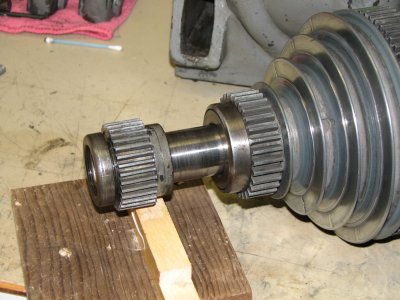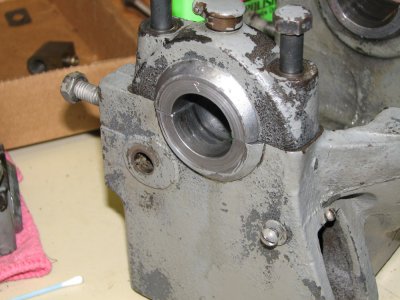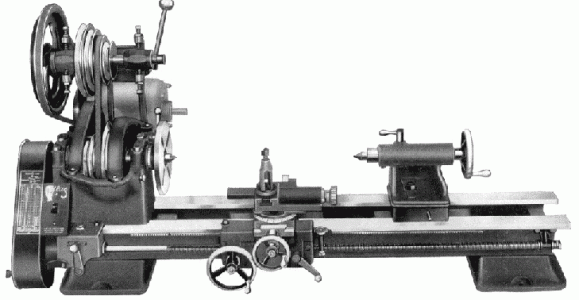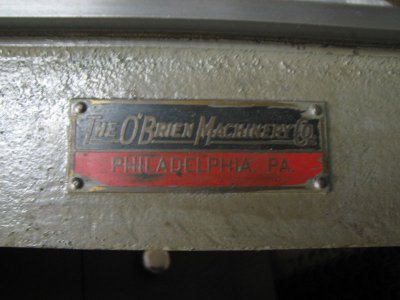- Joined
- Dec 12, 2011
- Messages
- 132
I am disassembling and cleaning the 10F babbit head lathe I just got and have a couple questions on the spindle assembly.
The previous owner mentioned he had the spindle out for some obscure reason as he also said he knew very little about lathes.
I am not sure if everything is back as it should be as I know there is a washer (9-89) missing.
So , #1 does anyone know the thickness of this washer and is it located against the bearing in the picture (inside the head stock) or against the spacer (outside the head stock) ?
#2 is the bearing in the picture facing the right way ?
#3 how tight is the adjustment collar (9-39) on the end supposed to be ?
There seems to be a lot of wear on the end of the headstock on this end but not at the chuck end.
Any help would be appreciated .




The previous owner mentioned he had the spindle out for some obscure reason as he also said he knew very little about lathes.
I am not sure if everything is back as it should be as I know there is a washer (9-89) missing.
So , #1 does anyone know the thickness of this washer and is it located against the bearing in the picture (inside the head stock) or against the spacer (outside the head stock) ?
#2 is the bearing in the picture facing the right way ?
#3 how tight is the adjustment collar (9-39) on the end supposed to be ?
There seems to be a lot of wear on the end of the headstock on this end but not at the chuck end.
Any help would be appreciated .






![DSCN0541[1].JPG DSCN0541[1].JPG](https://www.hobby-machinist.com/data/attachments/25/25529-4870e83bc616e1b37c1aef86da927ce2.jpg)
![DSCN0542[1].JPG DSCN0542[1].JPG](https://www.hobby-machinist.com/data/attachments/25/25530-19be1a583ff6727122732d80b5561975.jpg)
![DSCN0543[1].JPG DSCN0543[1].JPG](https://www.hobby-machinist.com/data/attachments/25/25531-a738690be04c414c1da6e533105c3fc0.jpg)

